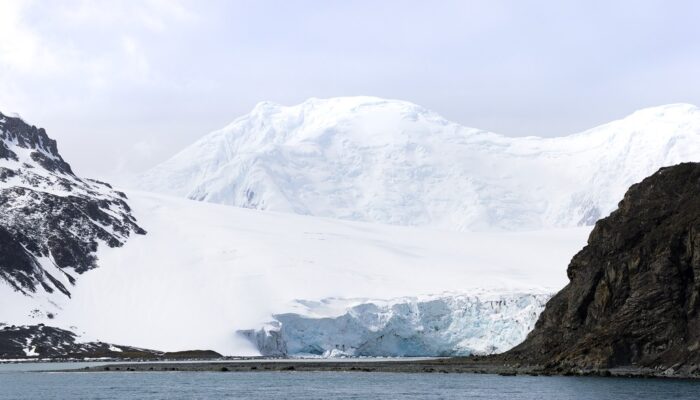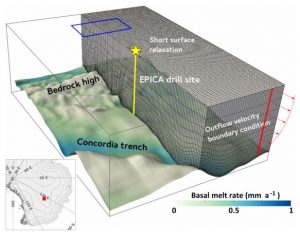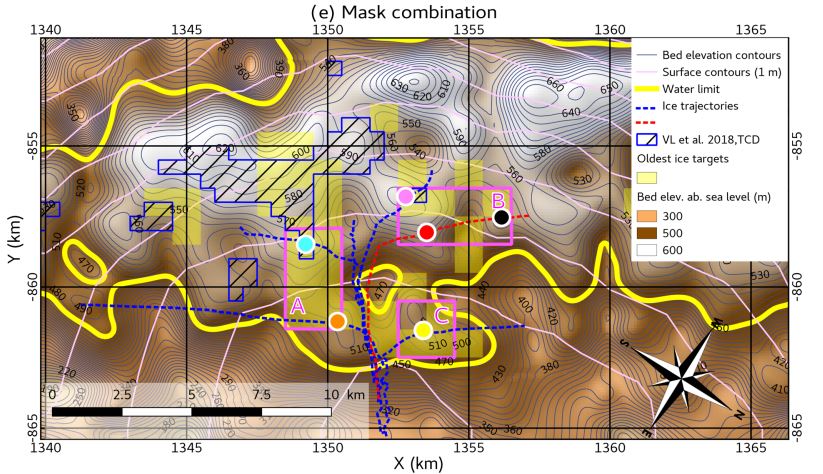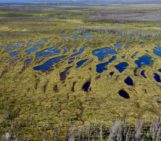
Where in the world can you find some of Earth’s oldest ice? That is the question a team of French and US scientists aimed to answer. They recently identified spots in East Antarctica that likely have the right conditions to harbor ice that formed 1.5 million years ago. Scientists hope that obtaining and analysing an undisturbed sample of ice this old will give them clues about Earth’s ancient climate.
The team published their findings in The Cryosphere, an open access journal of the European Geosciences Union (EGU).
Why study ancient ice?
When snow falls and covers an ice sheet, it forms a fluffy airy layer of frozen mass. Over time, this snowy layer is compacted into solid ice under the weight of new snowfall, trapping pockets of air, like amber trapping prehistoric insects. For today’s scientists, these air bubbles, some sealed off thousands to millions of years ago, are snapshots of what the Earth’s atmosphere looked like at the time these pockets were locked in ice. Researchers can tap into these bubbles to understand how the proportion of greenhouse gases in our atmosphere have changed throughout time.
As of now, the oldest ice archive available to scientists only goes back 800,000 years, according to the authors of the study. While pretty ancient, this ice record missed out on some major climate events in Earth’s recent history. Scientists are particularly interested in studying the time between 1.2 million years ago and 900,000 years ago, a period scientifically referred to as the mid-Pleistocene transition.
In the last few million years leading up to this transition, the Earth’s climate would experience a period of variation, from cold glacial periods to warmer periods, every 40,000 years. However, after the mid-Pleistocene transition, Earth’s climate cycle lengthened in time, with each period of variation occurring every 100,000 years.
Currently, there isn’t a scientific consensus on the origin of this transition or what factors were involved. By examining old ice samples and studying the composition of the atmospheric gases present throughout this transition, scientist hope to paint a clearer picture of this influential time. “Locating a future 1.5 [million-year]-old ice drill site was identified as one of the main goals of the ice-core community,” wrote the authors of the study.
The quest for old ice
Finding ice older than 800,000 years is difficult since the Earth’s deepest, oldest ice are the most at risk of melting due to the planet’s internal heat. Places where an ice sheet’s layers are very thick have an even greater risk of melting.

Mesh, bedrock dataset (Fretwell et al., 2013; Young et al., 2017) and basal melt rate (Passalacqua et al., 2017) used for the simulation. Credit: O. Passalacqua et al. 2018.
“If the ice thickness is too high the old ice at the bottom is getting so warm by geothermal heating that it is melted away,” said Hubertus Fischer, a climate physics researcher from the University of Bern in Switzerland not involved in the study, in an earlier EGU press release.
Last summer, a team of researchers from Princeton University announced that they had unearthed an ice core that dates back 2.7 million years, but the sample’s layers of ice aren’t in chronological order, with ice less than 800,000 years old intermingling with the older frozen strata. Rather than presenting a seamless record of Earth’s climate history, the core can only offer ‘climate snapshots.’
Finding the best of the rest
The authors of the recent The Cryosphere study used a series of criteria to guide their search for sites that likely could produce ice cores that are both old and undisturbed. They established that potential sites should of course contain ice as old as 1.5 million years, but also have a high enough resolution for scientists to study frequent changes in Earth’s climate.
Additionally, the researchers established that sites should not be prone to folding or wrinkling, as these kinds of disturbances can interfere with the order of ice layers.
Lastly, they noted that the bedrock on which the ice sheet sits should be higher than any nearby subglacial lakes, since the lake water could increase the risk of ice melt.

Magenta boxes A, B and C correspond to areas that could be considered as our best oldest-ice targets. Colored points locate possible drill sites. Credit: O. Passalacqua et al. 2018.
Using these criteria, the researchers evaluated one region of East Antarctica, the Dome C summit, which scientists in the past have considered a good candidate site for finding old ice. They ran three-dimensional ice flow simulations to locate parts of the region that are the most likely to contain ancient ice, based on their established parameters.
By narrowing down the list of eligible sites, the researchers were able to pinpoint regions just a few square kilometres in size where intact 1.5 million-year-old ice are very likely to be found, according to their models. Their results revealed that some promising areas are situated a little less than 40 kilometres southwest of the Dome C summit.
The researchers hope their new findings will bring scientists one step closer towards finding Earth’s ancient ice.
By Olivia Trani, EGU Communications Officer


